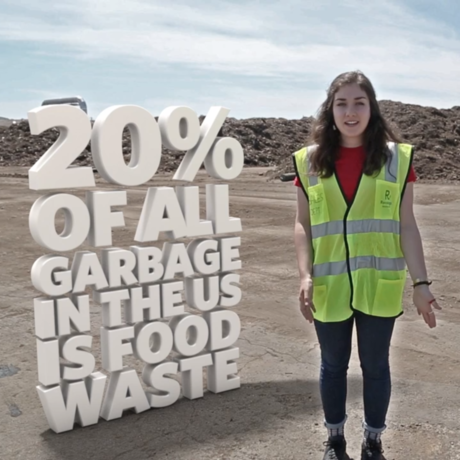Plastic is durable and long-lasting, making it useful for packaging things like food, but not so good for the environment. How is plastic debris impacting our oceans?
About This Video
Grade level: 6-10
Length: 5.5 minutes
Next Generation Science Standards: MS-ESS3-3, MS-ESS3-4 (PEs); MS-ESS3.C (DCI); Systems (CCC)
Ocean Literacy Principles: 6d, 6g
Video Discussion Questions:
- What are some of the benefits and drawbacks of plastic?
-
What problems does plastic debris in the ocean pose for marine life, and why?
-
What are some things people and communities are doing to address the problem of plastic debris in the ocean? What are some things you can do?
-
What are some alternatives to plastic packaging that might be better for the environment?
- What do you think the saying ‘think globally, act locally’ means? How does this apply to the issue of plastic debris in the ocean?
Download more discussion questions
Download student vocabulary
Post-Viewing Classroom Activities (grades 6-10):
Carrying Out Investigations and Analyzing Data
The first step in cleaning up our oceans is better understanding where ocean trash is coming from and what it is like. Take your students on a field trip to a local beach or waterway to safely collect and record debris.
- Start your own local marine debris database using a shared Google sheet, or contribute to a growing global database using mobile apps like the Marine Debris Tracker or Clean Swell. Challenge students to analyze and interpret their marine debris datasets and to use this information to recommend strategies for reducing debris in their local environment.
- Don't have the time or resources to take your students on a data collection field trip? Access an existing marine debris database online:
Science Notebook Reflections With Crosscutting Concepts
The NGSS Crosscutting Concepts present different ways of thinking about science content. Here are some example prompts using CCC lenses your students can reflect on after viewing the video:
- Systems and System Models Describe the journey of a piece of plastic trash from the moment it is created to the moment it ends up on the ocean. At what points in its journey could we intervene to prevent it from reaching the ocean, and how?
- Patterns Can we/how can we use the patterns of ocean gyres to either predict where a piece of debris that enters the ocean in one place might end up, or where a piece of debris already in the ocean came from?
Math and Computational Challenges
Looking for more real-world math? Look no further! After working through these problems, discuss as a class how they could be applied to ocean conservation or why they might be important to know:
- Using the information given in the video about the Japanese teenager's soccer ball, write an equation to calculate the average speed of the ocean current(s) that transported the ball across the Pacific Ocean. Then, solve the equation! CCSS MS Math: Ratios & Proportional Relationships, Expressions & Equations
- Using the information given in the video about how much plastic gets into the ocean every year, create a graph of plastic in the ocean over time. Use 1930 as the year of 'zero' plastic in the ocean (this was the decade when mass production of plastic began). Then, use this graph to predict how much plastic will be in the oceans by the year 2050 if plastic pollution continues at this rate. CCSS MS Math: Ratios & Proportional Relationships
- Calculate the surface area of a rectangular plastic container lid 60 cm x 30 cm x 2 cm. Now, imagine that this plastic lid gets carried into the ocean by a wave and slowly photodegrades into 100 equally-sized pieces. What is the total surface area of all of these 100 pieces? CCSS MS Math: Geometry
Designing Solutions
One of the biggest ways we can reduce plastic pollution is by not using plastic in the first place.
- Challenge your students to redesign one kind of plastic packaging—such as a styrofoam take-out container, candy wrapper, or tube of toothpaste—using more sustainable and environmentally-friendly materials. Hold a Design Fair where students share their designs with each other. For inspiration, check out this article: Genius Solid Shampoos Use No Plastic Packaging By Leaving Out Water
Connections to Standards
While this video doesn't necessarily cover the following standards in depth, it is a compelling resource you can use to supplement your curriculum that does.
NGSS Performance Expectations (Grades 6-8)
MS-ESS3-3: Apply scientific principles to design a method for monitoring and minimizing a human impact on the environment.
MS-ESS3-4: Construct and argument supported by evidence for how increases in human population and per-capita consumption of natural resources impact Earth's systems.
NGSS Disciplinary Core Ideas (Grades 6-8)
MS-ESS3.C: Human Impacts on Earth Systems
NGSS Crosscutting Concepts (Grades 6-8)
Systems and System Models
Ocean Literacy Principles
#6: The oceans and humans are inextricably interconnected.
Healthy Oceans: Browse all materials
The ocean affects everyone. It provides important resources and recreational enjoyment to people around the world and is home to some of the most diverse ecosystems on Earth: coral reefs. But the ocean's resources and biodiversity are under threat from human impacts. What are some local actions we can take to protect our global ocean?
- Video: Coral Reefs and Climate Change
- Video: Solutions to Human Impacts
- Video: Sustainable Seafood
- Video: Preventing Plastic Pollution [You are here!]
- Classroom Activities
Additional Resources
Surfrider Foundation
Do you like clean, pristine beaches? Then volunteer with Surfrider and help keep our beaches debris-free!
Economic study shows marine debris costs California residents millions of dollars
This report from NOAA explains how marine debris isn’t just a problem for the environment, but for our wallets too.
What's the deal with plastic pollution? | Conservation & Science at the Monterey Bay Aquarium
Read about and listen to the Monterey Bay Aquarium's new podcast series, 'Breaking Down: The Problem with Plastic Pollution.'
Lesson: Rapid Trash Assessment (grades 4-12)
By conducting their own survey of an outdoor environment, students will examine a method for assessing litter, identify how humans impact the environment, and design solutions for preventing marine debris.
Lesson: Plastics in the Water Column (grades 6-8)
What happens when plastics enter the ocean? Students find out by exploring the densities of different plastics. From our friends at the Monterey Bay Aquarium.
Lesson: Plastics Use Audit (grades 6-12)
How much plastic do we consume? In this activity, students design an investigation and conduct an audit of waste at home or in their schools to discover the types and quantities of plastics that are consumed. From our friends at the Monterey Bay Aquarium.
Lesson: Compost: A Scientific Investigation (grades 3-5 but can be adapted for 6-8)
In this two-part inquiry-based activity, students will practice using the scientific method while learning about decomposition, exploring how some types of garbage will decompose while others will not. Students can then go on to design their own experiment to test different variables affecting the rate of decomposition.

